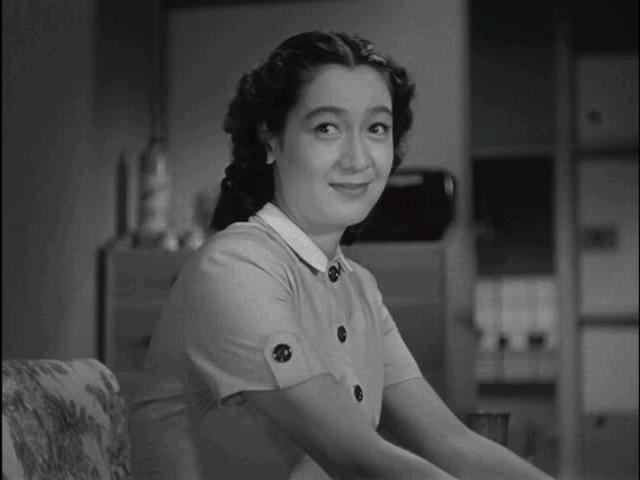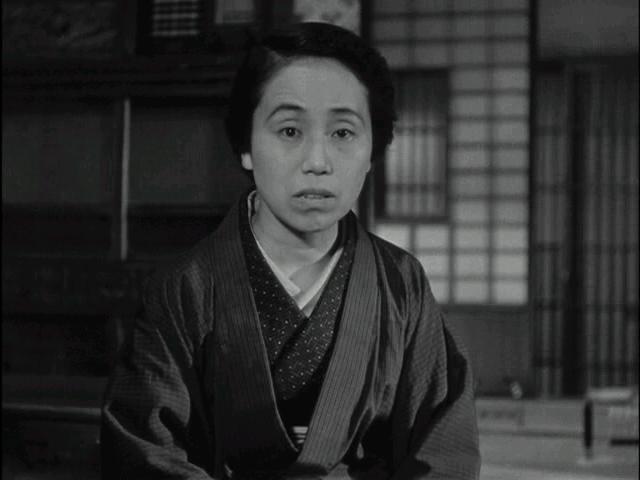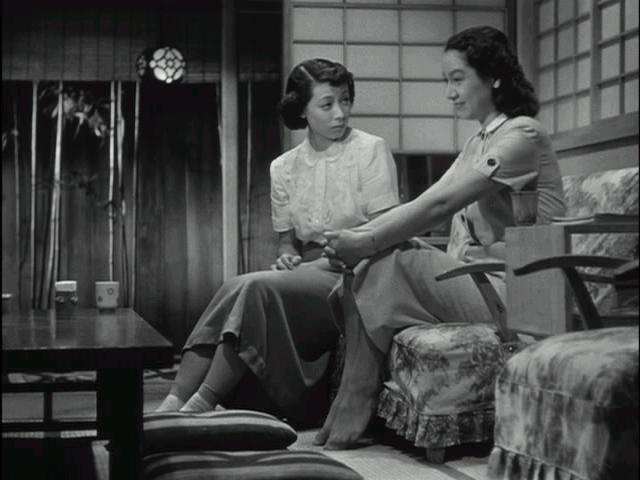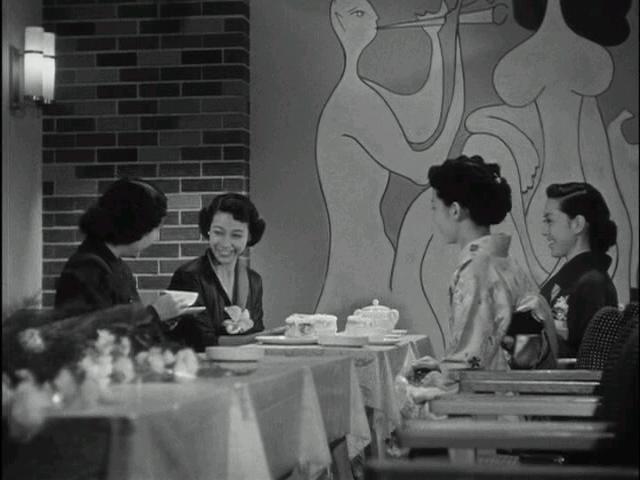Early Summer (1951)
“Some women don’t want to get married — are you one of them?”
|
Synopsis: |
|
Genres, Themes, Actors, and Directors:
Review: Interwoven with this central story are classic Ozu-style vignettes of family life and intergenerational conflict, all of which speak volumes about the shifting roles of men, women, and children in post-war Japan: Noriko’s spoiled nephews (Zen Murase and Isao Shirosawa) are consistently rude to their elders, who in turn are both bemused and frustrated by the boys’ behavior; Noriko’s parents (Ichiro Sagai and Chieko Higashiyama) are contemplating moving away and “leaving the house to the young people”; Noriko and her friend Aya (Chikage Awashima) giggle knowingly over their options as independent working women. As always, Ozu’s distinctive directorial style — low camera angles, long shots, luminous b&w photography — makes for an evocative, leisurely viewing experience, one which is deceptively simple on the surface, yet packs an emotional punch. While firmly grounded in Japanese cultural mores, Ozu’s films are remarkably accessible to western audiences, who will easily be able to relate to the universal themes of family and independence — and the difficulty in maintaining a delicate balance between the two. Note: Hara plays a character named Noriko in three of Ozu’s films: this, Late Spring (1949), and Tokyo Story (1953). Redeeming Qualities and Moments:
Must See? Categories
Links: |








One thought on “Early Summer (1951)”
A must.
Having just rewatched ‘Floating Weeds’ and now ‘Early Summer’, it’s struck me that it can be instructive to watch two such films of Ozu’s back-to-back: one that’s less successful (‘FW’) and one that works rather well and is actually compelling (‘ES’).
I hesitate to use the word ‘compelling’ since that implies drive – and that’s something that Ozu films do not have overtly. Yet his work can have undertow, depending on the extent of exploration in a particular film.
Broadly speaking, Ozu did not change his style from film to film. And he apparently disliked plot. So, in a sense, when you sit down to watch one of his films, you are about to watch Chekhov – where character is everything. It’s what Ozu does with his minimalist approach from film to film that determines whether or not a particular film has punch. Basically, with ‘FW’, Ozu had less to work with; with ‘ES’ many of the characters have much more of an active history with each other – giving Ozu more to pull from and develop.
Though I think ‘ES’ works as an entire film, the main reason to see it is for Setsuko Hara’s performance – she’s among Japan’s best actresses. (Shocking to discover that she actually did not enjoy acting at all and claims to have pursued it only as a means to support her family. It was apparently rather easy for her to give up her career when it was at its peak; a move which angered her fans.) Hara’s work appears effortless but, at the same time, you watch her knowing the well runs deep. That’s not only true here but also in significantly different ways in ‘Late Spring’, ‘Tokyo Story’ and ‘Tokyo Twilight’ (Ozu’s major commercial flop – which is, nevertheless, my favorite Ozu film after ‘Toyko Story’ because of the risk Ozu took by branching out with it). [Note: another personal fave Hara performance is in Kurosawa’s ‘No Regrets For Our Youth’.]
As with a number of other Ozu films as his career progressed, there’s something subversive at work here. I’ve often felt that, even as they embrace so much about traditional Japan, his films are very critical of various aspects of his society. But, again, it’s not overt – so sometimes we’re unsure of intent. In this film, it seems that the criticism is directed toward the character of Hara’s brother (Chishu Ryu). He’s both the mouthpiece and example of what Ozu seems to equate with some of post-war Japan’s attitude problems: regarding a marriage partner (“As long as he’s respectable, we shouldn’t be picky.”); regarding failure to discipline or understand children (“They take after me more and more. But only my bad side.”); regarding an overblown sense of place in the family hierarchy.
In ‘ES’, we get also get a very odd exchange between Sano and Awashima about Hara –
Sano: Has she ever been in love?
Awashima: I don’t think so. But she has an album of Audrey Hepburn photos this thick.
Sano: …So she goes for women?
Awashima: No!
Sano: You never know.
In the film, Hara is clearly revealed as a woman who wants to think and decide for herself, even if she still has a vestige of the traditional Japanese woman inside her. It’s very surprising to hear it mentioned, in a 1951 Japanese film, that such a woman could openly be thought of as a lesbian. (Sidenote, tho: the depiction of friendship between Hara and Awashima is refreshingly charming for a Japanese film of this period as well.)